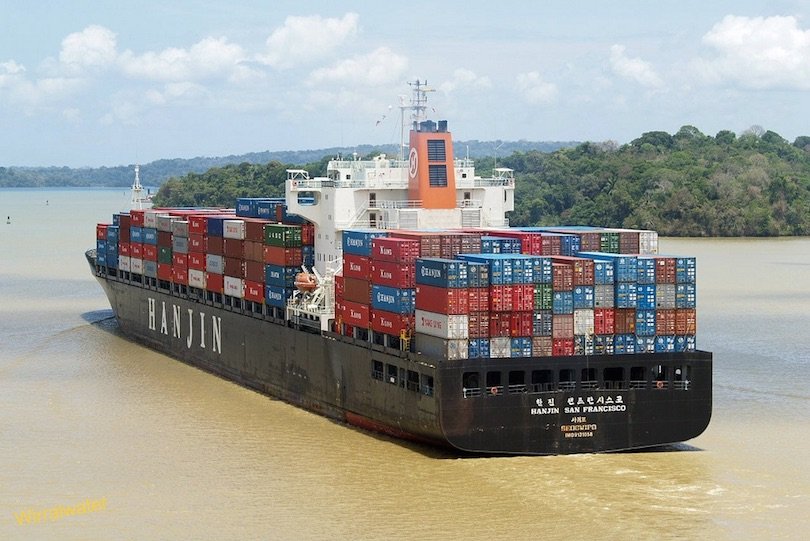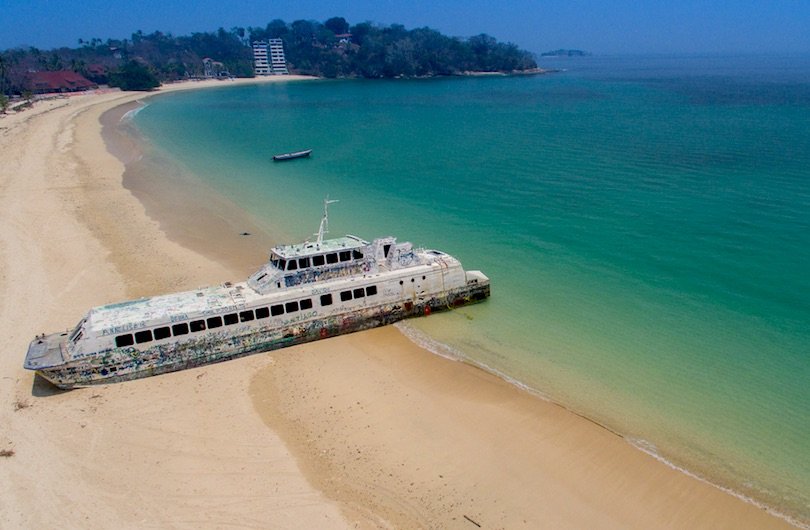10 Best Places to Visit in Panama, with its access to both the turquoise Caribbean and the azure Pacific, offers a tropical paradise that is appealing all year round. In addition to its stunning beaches and breathtaking natural landscapes, Panama has established itself as one of the most welcoming tourist destinations in Central America.
While the Panama Canal is undoubtedly a remarkable feat of engineering that connects the Pacific and Atlantic Oceans, there is much more to explore in this vibrant country. From charming mountain villages and bustling cities with towering skyscrapers to picturesque coffee plantations and enchanting island archipelagos, Panama has something to offer every type of traveler. Here, we take a closer look at some of the top places to visit in Panama.
Gulf of Chiriqui is one of the 10 Best Places to Visit in Panama
The Gulf of Chiriquí extends along the Pacific coast between Costa Rica and the Azuero Peninsula. It consists of numerous picturesque islands and beaches covered with forests and coconut palms. Among these are Golfo de Chiriquí National Park and Coiba National Park, which happens to be the largest island in Panama.
Established in 1994, this marine park safeguards vast hectares of coral reefs, some of the most abundant mangrove forests in Central America, and stunning coastal meadows. The islands of Cala Mia Island Resort, Isla Palenque, and Isla Secas offer a range of tourist attractions.
Coiba National Park is a popular destination for humpback whale watching from May to November, and if you’re lucky, you might catch a glimpse of Galapagos seals on the distant island of Montuosa. For those who prefer a more relaxed experience, sunbathing on one of the breathtaking beaches is highly recommended. However, if you’re seeking a bit more adventure, you can try surfing, scuba diving, or sport fishing.
Boquete[SEE MAP]
Situated in the Chiriqui province on the Pacific West, Boquete village presents an ideal setting for relaxation and rejuvenation. Immerse yourself in the invigorating mountain air while being surrounded by a captivating tapestry of coffee plantations. Notably, this quaint mountain village has attracted a considerable number of North American expatriates and has emerged as a prominent destination for health tourism, boasting an array of luxurious spas and hotels.
For thrill-seekers, Boquete offers an emphasis on outdoor activities, with a consistently pleasant temperature in the low 70s throughout the year, earning it the moniker ‘The Land of Eternal Springtime.’ It is also affectionately referred to as ‘the Valley of the Flowers’ and provides a lesser-known alternative to the tourist attractions of Costa Rica. Here, you can embrace your adventurous spirit by engaging in exhilarating experiences such as zip-lining through the rainforest, white water rafting, embarking on a hike up the Baru volcano, or venturing on a trek to spot howler monkeys and resplendent quetzals. Alternatively, you can leisurely explore the region’s picturesque coffee plantations, indulging in some of the finest brews the world has to offer.
Santa Catalina[SEE MAP]
Santa Catalina, located off Panama’s Pacific coast, is a serene fishing village that has become a popular tourist destination. Its remote and unspoiled authenticity is what attracts most travelers. The village is also a well-known surfing and diving spot with stunning beaches, and it serves as a gateway to the Coiba National Marine Park.
Although Santa Catalina lacks major landmarks, man-made attractions, or shopping malls, tourists can enjoy friendly locals, a relaxed atmosphere, and sandy beaches perfect for swimming, snorkeling, diving, and sport fishing. The village also boasts some of the best surf breaks in Central America and offers horseback riding and birdwatching opportunities. However, visitors should be cautious when traveling to Santa Catalina as it can only be accessed by a single, winding paved road from Sona, and cattle can cause sudden and dangerous roadblocks. It is recommended to travel during daylight hours.
San Blas Islands[SEE MAP]
The San Blas Islands, situated off the Caribbean coast, are governed by the indigenous Kuna Yala tribe who speak their own language, Tulekaya. Although a popular destination for backpackers traveling between Colombia and Panama, the islands still offer a glimpse into the everyday life of an indigenous community where electricity is not always available and ATMs are non-existent. Visitors are advised to bring ample cash for their stay.
The islands offer a range of activities such as sunbathing on pristine beaches, swimming, snorkeling, and diving among hundreds of tropical fish species. Hiking trails through lush vegetation provide opportunities to spot colorful birds and hear the calls of howler monkeys. A visit to the Kuna Yala Indians is a great way to learn about their language, traditions, music, and unique dress. The tribe members often host festivals and dances and sell handicrafts that make for great souvenirs.
Bocas del Toro[SEE MAP]
The Bocas del Toro Archipelago comprises a collection of islands, islets, and cays situated between Almirante Bay and Chiriqui Lagoon in the Caribbean Sea. Positioned in the north-western part of Panama, this group of islands is an integral part of the Bocas del Toro district and province, and it is also home to a significant city bearing the same name.
Exploring the islands is convenient for visitors, as they can easily navigate through water taxis and private boats. Additionally, Isla Colon can be accessed via ferry and plane, thanks to its international airport. Bocas del Toro is a captivating paradise, boasting untamed jungles, national parks, and diverse habitats that support a wide range of bird species and marine turtles. Some of the flora and fauna found here are exclusive to this region, including endangered species like painted rabbits, green iguanas, and howler monkeys.
Similar to other Caribbean destinations, Bocas del Toro offers stunning beaches and crystal-clear blue waters, making diving and snorkeling highly popular activities. The capital city of the province, Bocas del Toro, is a vibrant melting pot of different ethnicities, ranging from Western Caribe to Latino and extraneros, each contributing their unique culinary delights and cultural traditions. Moreover, while most of the islands are known for their laid-back atmosphere, Bocas Town surprises visitors with its lively nightlife once the sun sets.
Panama City[SEE MAP]
Panama City, the capital and largest city of Panama, boasts numerous remarkable features. Serving as both the national and provincial capital, it stands out as the most contemporary city in Central America. To illustrate its modernity, it has earned the unofficial moniker of ‘the Dubai of Latin America’. The cityscape is adorned with luxurious resorts, extravagant shopping malls, and dazzling skyscrapers, presenting a captivating sight at every turn.
Similar to New York, taxis are the preferred mode of transportation in Panama City. Most residents opt for taxis rather than walking distances exceeding half a mile. However, if you prefer the freedom of strolling, the historic quarter of Casco Viejo offers cobblestone streets and colonial buildings that are more pedestrian-friendly.
Panama City is renowned for its breathtaking views, surrounded by the lush Panamanian rainforest that encroaches upon the city’s boundaries. One cannot miss the grandeur of the Panama Canal, undoubtedly the highlight of this multicultural capital. Whether you choose to skydive for a thrilling experience, climb the Bridge of the Americas for a panoramic view of the cityscape, or rent a bike to explore the four islands along the Amador Causeway, the city offers an array of opportunities to immerse yourself in its beauty.
Panama Canal[SEE MAP]
The Panama Canal, a renowned landmark in Panama and Central America, serves as a vital waterway connecting Panama City on the Pacific side to Colon on the Atlantic side. This strategic route offers a convenient shortcut between two oceans, making it one of the world’s busiest shipping zones. Originally initiated by the French in the late 19th century, the project faced abandonment in 1893 due to the devastating toll of diseases such as malaria and yellow fever, which claimed the lives of numerous workers.
A decade later, the United States assumed control of the project, employing more advanced machinery to accomplish this monumental engineering feat. By 1914, the construction was successfully completed. The canal system incorporates three significant locks, serving as prime locations to witness the operational mechanics of the canal. The Miraflores Visitor Center, located just a short drive from the capital, offers an excellent vantage point to observe these mechanisms in action. Each lock takes approximately eight minutes to fill or release water, allowing ships to be raised or lowered to the next water level before proceeding through the subsequent lock. In total, it takes a mere ten hours for a ship to traverse from one ocean to the other.
El Valle de Anton[SEE MAP]
El Valle de Anton, located in the Cocle Province of Central Panama, is a charming and picturesque village surrounded by an ancient volcanic caldera. It has been continuously inhabited for centuries, making it the oldest volcanic site on Earth. The village is a prime example of Old Panama, where life is slower and bicycles are the preferred mode of transportation due to its isolation from the rest of civilization.
Unlike western consumerist culture, El Valle de Anton focuses on nature, offering visitors the chance to explore the local orchid conservatory, amphibian rescue station, nearby forests for bird-watching, and valleys with impressive waterfalls and rare golden frogs. The village’s most touristy options are an ice cream parlor and a pizza place, which are only open on weekends.
Pearl Islands[SEE MAP]
The Pearl Islands of Panama, situated in the Pacific Ocean, gained significant recognition through their appearances in three seasons of the reality TV show Survivor. These islands are renowned for their breathtaking beauty, characterized by lush forests and pristine, pearl-white sandy beaches. While the islands’ allure primarily stems from their seclusion, Contadora Island stands out as the most developed, boasting two luxurious tourist resorts.
Originally inhabited by native Indians until the 16th century, the Pearl Islands were subsequently colonized by the Spanish, who arrived in search of the precious pearls that gave the islands their name. The pearl industry thrived here, with pearls being meticulously counted, registered, and shipped from Contadora Island, aptly named ‘Counting Island’. The main activities on these islands revolve around relaxation, such as sunbathing on the numerous exquisite beaches, fishing, whale watching, or exploring the decaying shipwreck located on the far side of Playa Larga, Contadora Island’s largest beach.
Volcan Baru[SEE MAP]
Panama’s highest peak, Volcan Baru, boasts breathtaking views of Costa Rica, the Pacific and Atlantic oceans. To catch the sunrise, it’s best to start the hike at dawn. You can either begin the hike at midnight and return later in the day or camp at Fogones campground near the summit. There are two routes to choose from, with the Boquete route being the easier option. It takes five to eight hours to ascend and three to five hours to descend. For a more scenic route, take the Volcan route down, which is steeper. As you’ll be climbing to a height of 3,474 meters above sea level, it’s important to allow enough time to acclimatize to avoid mild altitude sickness.















